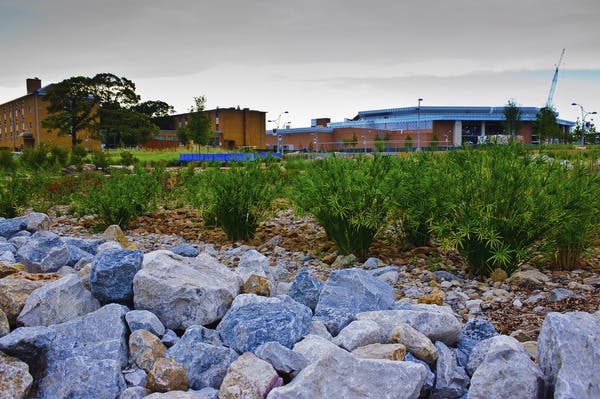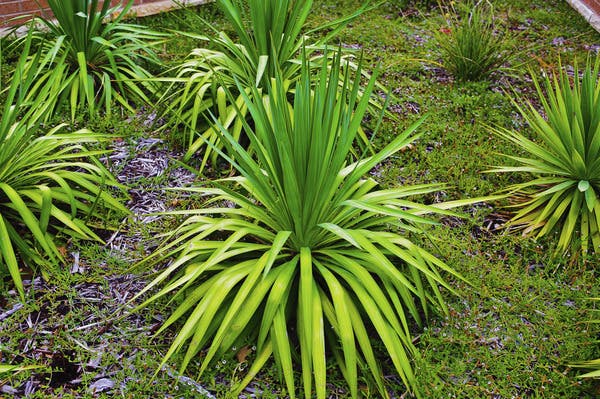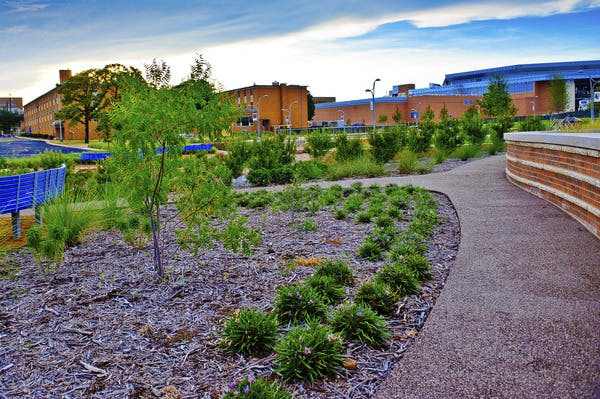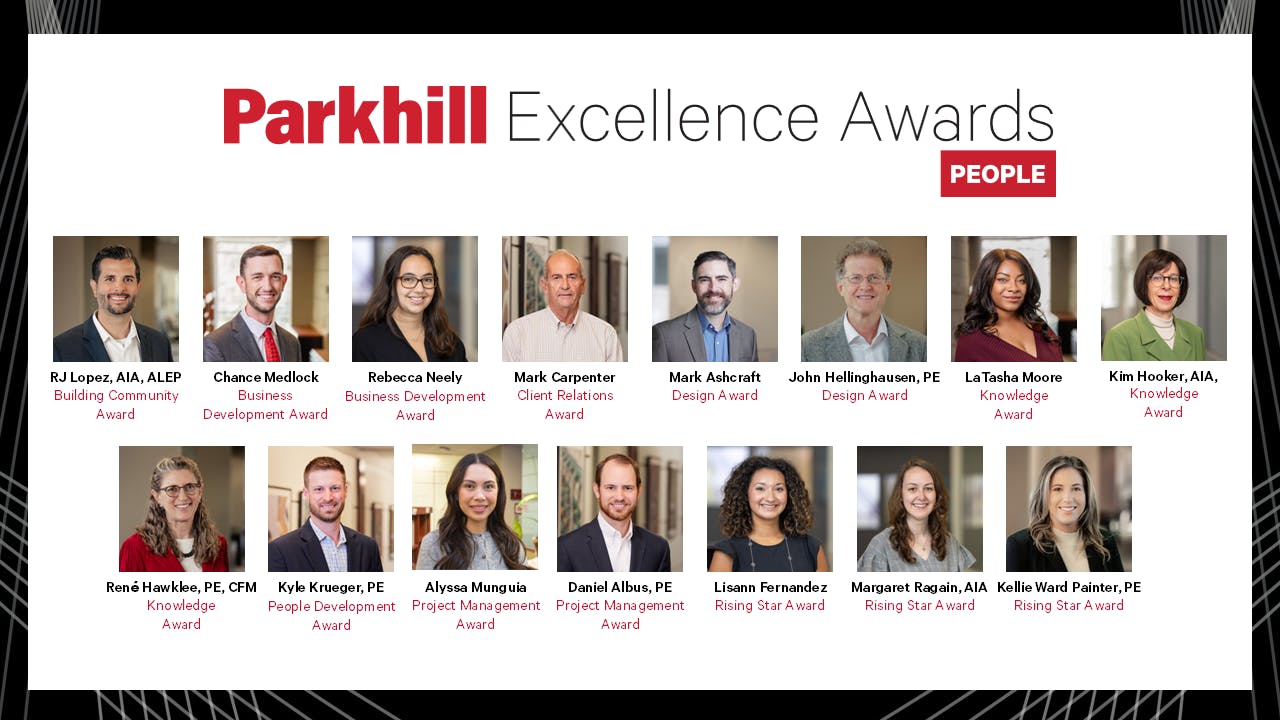University of Parkhill 2021: Sustainable Infrastructure - The Green at College Park Solution
Category: Landscape Architecture
Written By: Kristen West
Date: August 23, 2021
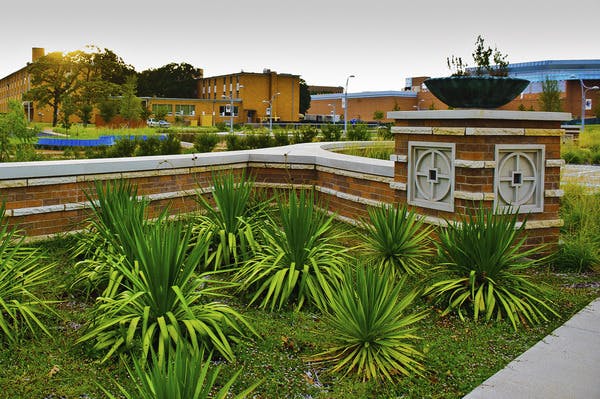
In the early 2010s, the University of Texas at Arlington (UTA) was in deep water – literally. At this year’s 2021 University of Parkhill conference, Larry Stone, PE, RPLS, and Clint Wofford, RLA, looked back on how The Green at College Park project transformed the challenges UTA was facing into sustainability opportunities.
The Dallas-Fort Worth (DFW) region is expected to grow 48% by 2040 to approximately 10.6 million (NCTCG). Population growth on that scale requires supportive infrastructure, but the existing water supply, including surface water, groundwater, and reuse water, is predicted to decrease by 10% (UTA).
“Designing stormwater means looking forward,” said Larry. “In DFW especially, the current surge in development is resulting in significant challenges when it comes to downstream flooding and water quality.”
As an R-1 “Very High Research Activity” university, UTA engaged Parkhill | SR to transform the eastern edge of its Arlington campus into a teaching tool for sustainability that would demonstrate its dedication to “investing in today and helping create technology for tomorrow” (UTA Institute of Sustainability and Global Impact).
“Sustainability traverses the sciences, politics, economics, culture, arts, humanities, and ethics, and recognizes the pursuit of economic prosperity and social equity through the development of practices, technologies, ideas, or values that will increase the resilience and economic empowerment of communities and their surrounding regions, and permit non-humans and ecosystems to thrive” - UTA Office of Sustainability
One of these improvements was the landmark oval lawn. A destination for social activities, sports games, and concerts, the oval lawn also serves to improve water detention and quality. “Creatively,” Larry said, “we design detention areas, not as just big holes, but as improvements to benefit the site and provide an amenity for the community.”
It is one of many green infrastructures for the campus. Others include:
- Permeable Pavements
- Recycled Roadway and Trail Construction Materials
- Bioretention and Rain Garden
- Bioswale
- Filter Strip
- Infiltration Trench
- Xeric Species
- LED Lighting
- Evapotranspiration-based Irrigation Controller
- Dry Streambed
The project has been more than just a solution to a problem. It is a teaching tool and demonstrates UTA’s commitment to investing in the future of its students and community. It’s also a great example of how designers can use a challenge to create opportunities for their clients.
